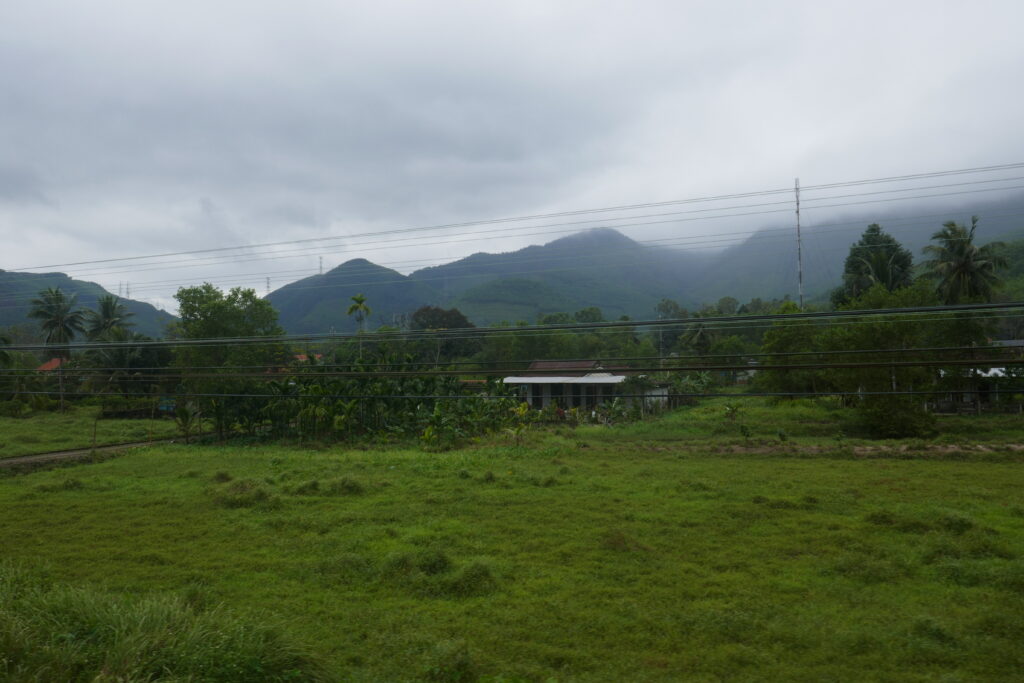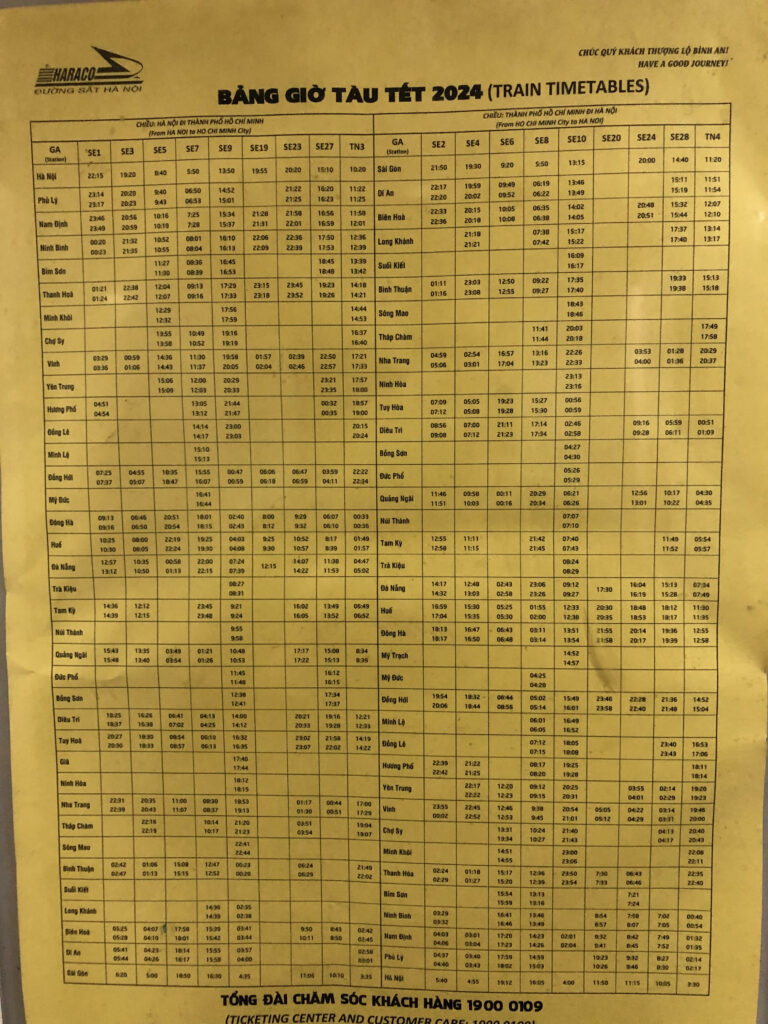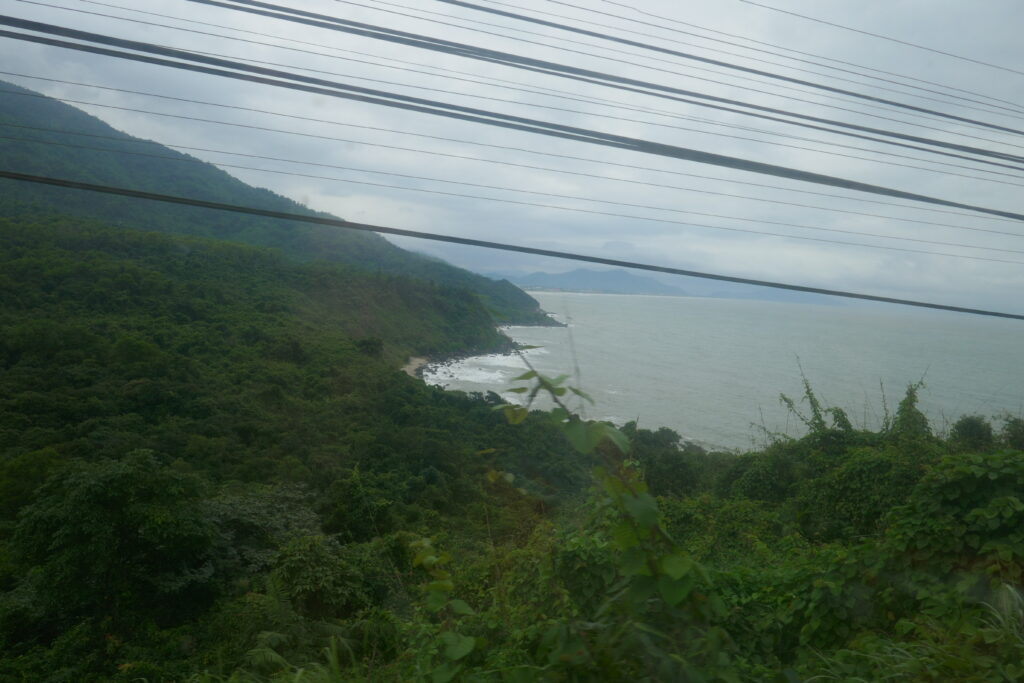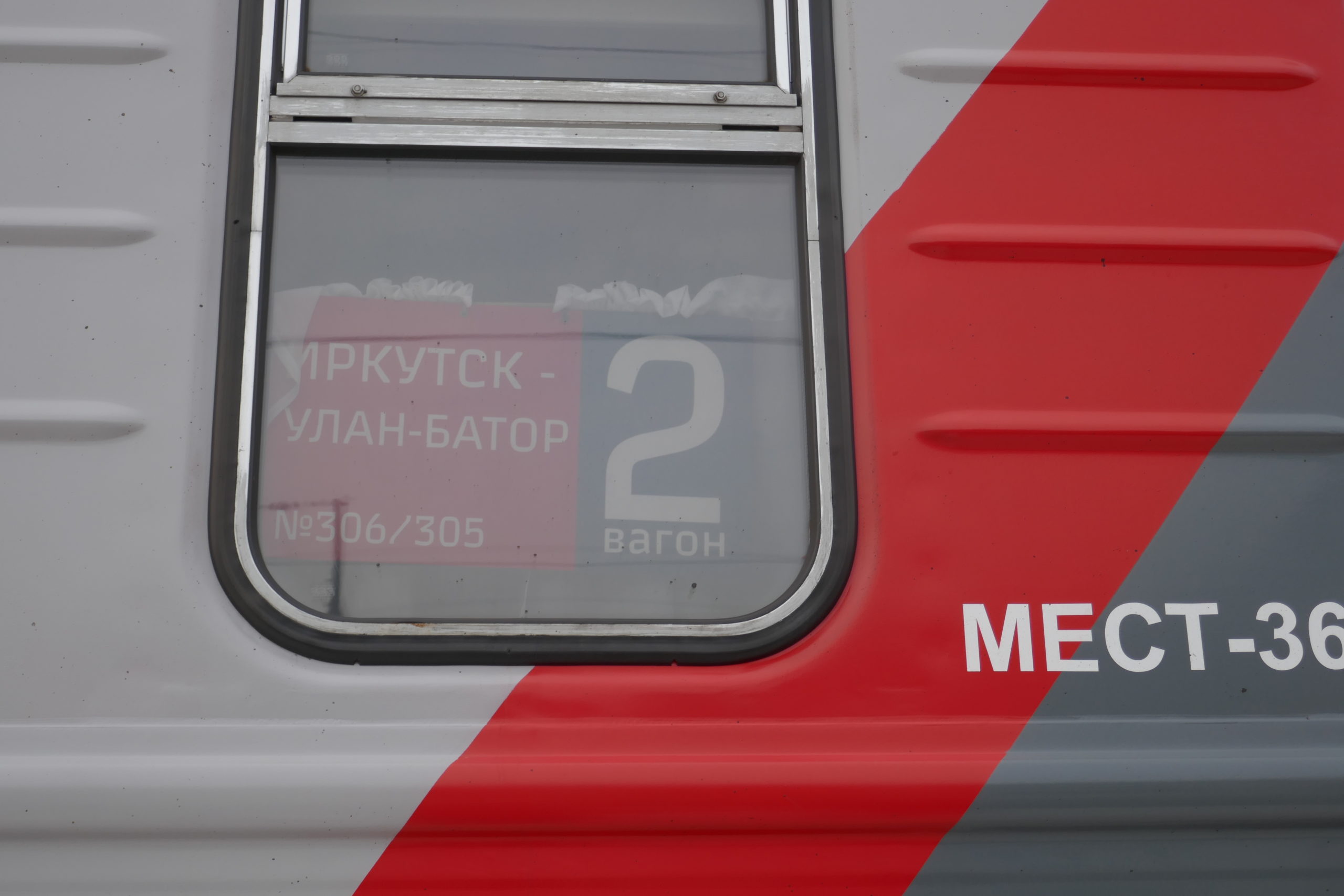Travelling by train in Vietnam is very convenient and cheap. In this article we would like to give you all the information you need to know to plan your trip in the Southeast Asian country.
Click on the section of your interest or scroll down to read the all article:
- Why Travelling by Train?
- The Reunification line
- How to buy the tickets
- How much does it cost?
- What to expect from the Vietnamese trains
Why travelling by train in Vietnam
We love travelling by train and, whenever it is possible, we tend to choose it as preferred method of transport. Many international travellers think that taking internal flight is faster and more convenient but, in actual fact, if you travel overnight from Hanoi to Huè or Danang by train you will actually save time and money. In addition, you will enjoy spectacular views of the country and meet local people, two good reason to opt for trains. In January 2024, we travelled by train from Hanoi to Da Nang and from Da Nang to Huè.
The Reunification Line
The trains the run between Hanoi and Saigon are often referred as Reunification Express and they run along the Reunification Line, which, along with the the railway that connect Sapa and Haiphong passing through Hanoi, it is the only railway in Vietnam. The Reunification line follows the coast of the country stopping by the main cities and places of tourist interest, making it a very convenient way of transport. The line was built by the French in 1936 and operated until 1954, when the country was divided between North and South. On 31st December 1976, trains resumed unifying the country. Over the last few decades both the railway and the trains improved and today you can travel in comfortable air-conditioned trains the all length of the country in about 2 days and a half.

How to buy the tickets
Several tour operators allow you to buy Vietnamese train tickets online but they all take a commission so we do not recommend them as preferred choice.
Buy tickets from the Vietnamese railways website
We bought train tickets online directly from the official website of the Vietnamese railway company and we believe it is the best way to buy tickets. The website of the Vietnamese railways is www.dsvn.vn, you can find all the information in English and card payments (Visa & Mastercard) are accepted.
Please note that bookings generally open 60 days in advance and, in some cases, only 30 days. Make sure you keep an eye from time to time to double check if tickets are available. Also, we noticed that some seats, especially couchettes, are reserved for longer journeys so for example we couldn’t find any ticket from Hanoi to Dong Hoi but we found them from Hanoi to Da Nang and then we came back taking another train. If you do not find any ticket for your journey, you can try to select another destination and you may find the ticket. Worst case scenario, you can head off at the train station you wanted originally, the train will stop anyway.
Finally, if you change your plans you can be reimbursed but if you buy the tickets online you need to request the refund online and not at the train station. To do that go to return ticket (at the top of the page of the Vietnamese railways’ website), insert your booking code, email and phone number and follow the instructions (you will receive an email with your booking reference once you make the reservation. The email is in Vietnamese, if you have any doubt about what’s written you can use an online translator). You will receive the refund in Vietnamese Dong within the next 3 days paying a small cancellation fee. We normally use Wise as online bank account that allows us to hold different currencies in one single bank account. If you don’t have such option your bank will probably convert Dong to your local currency taking a commission. We were planning to go to Sapa but then it was too cold so we cancelled our tickets and we requested an online refund. We received the money back within two working days.
Buy tickets at the train station
This is probably the easiest way to buy train tickets in Vietnam but you need to be in the country to buy the tickets and you may struggle to find them, particularly during the Tet Holiday. The main advantage of buying train tickets directly at the station is that if you change your mind and want a refund you can go to any train station and you will get an immediate refund in cash. This option is particularly valid if your bank doesn’t allow you to hold multiple currency in your bank account.
How much does it cost?
Train travel in Vietnam is quite cheap for most western travellers. There are basically three ticket options you can choose from: seats, 4-bed couchette or 6-bed couchette. Seats are clearly the cheapest option but not the ideal one if you have a long journey in front of you, we took the seat to go from Da Nang to Huè and it was only 77.000 VND per person.
Both the 6 and the 4-bed couchettes are good options for an overnight trip, if you are a group of people you can even reserve the entire cabin for you. However, just be aware that the top bed of the 6-bed couchette is quite close to the ceiling and there is not much vital space, for us it was a reminder of the Chinese trains.
Because we travelled with other two people, this time we opted for 4-bed couchette and we reserved the entire cabin. From Hanoi to Da Nang we paid around 1.200.000 VND per person (the upper bed is cheaper than the lower one) and it took us roughly 15hrs (from 9pm until midday the next day). We believe the price is good considering that you cross the half of the country. If you choose a 6-bed couchette it is even cheaper than that.
What to expect from the Vietnamese trains
There are different types of trains in Vietnam but, generally speaking, SE1 – SE2 – SE3 & SE4 are the fastest ones and so the preferred choice for tourists. The other trains may do more stops along the way and can be quite slow overall, consider them as last resource if you don’t find any other ticket.

4-berth couchette
Each train has a corridor running along the 4-berth compartment that can be closed from the inside. Each compartment has 4 berths, two upper and two lower.
Each bed has its own reading light and it’s supplied with pillow and sheets. Despite some people say that they provide a duvet as well, it was not the case for us and because it was quite cold, we asked the train manager to shut the A/C for us. We were ok without A/C but it can be quite cold if the A/C is on. Make sure you keep something warm with you. Inside the cabin you will also find a small table, a rubbish bin, a storage for your luggage (above the door) and a socket at the head of each bed, although our wasn’t working.
You will also find a water dispenser with both cold and hot water in each wagon. This is particularly handy if you bring noodles, coffee or tea with you on the train. If you forget to buy food, you can always buy it from the sellers on the train or from the restaurant wagon, although it may be slightly more expensive.
Views from the train
We travelled from Hanoi to Da Nang overnight and from Da Nang to Huè during the day. Overall the section between Huè and Da Nang is the most picturesque combining splendid coastline with forested mountains, lagoons, islets and villages. The highlight is the Han Vai Pass, where the track clings to mountains nearby the sea. If you are lucky the train will stop briefly for a view of Lang Co Beach, a pretty stretch of white sand on the north side of the pass.





